Ode to the Turtle Tank
The Russian turtle tank is weird and interesting, and only a temporary solution to a larger battlefield challenge
I have been wanting to write on this topic for a little while now because it is another example of tactical innovation in the Ukraine war worthy of examination. The capture of a turtle tank by the Ukrainians this week has prompted me to pull my finger out and write on this topic. I did briefly cover this topic in my Big Five post a couple of days ago but wanted to expand on it.
In April this year, a bizzare new armoured vehicle appeared on the battlefield in the vicinity of Krasnohorivka in eastern Ukraine. A Russian tank that was encased in an iron shell, and topped with an electronic warfare suite, was employed by the Russian Army as part of an assault on Ukrainian armed forces.
The new vehicle was quickly christened as ‘the turtle tank’. This development was reported on at the time as follows by The War Zone:
The appearance of Russia’s turtle tanks was already preceded by the use of increasingly more elaborate cage-like add-on anti-drone armor, also called “cope cages.” These have now become a common fixture on armored vehicles on both sides of the conflict, and have begun to appear outside of Ukraine, including potentially even on submarines. As The War Zone has previously pointed out, if nothing else, the turtle tanks are prime examples of the breakneck speed of the cycle of battlefield innovation.
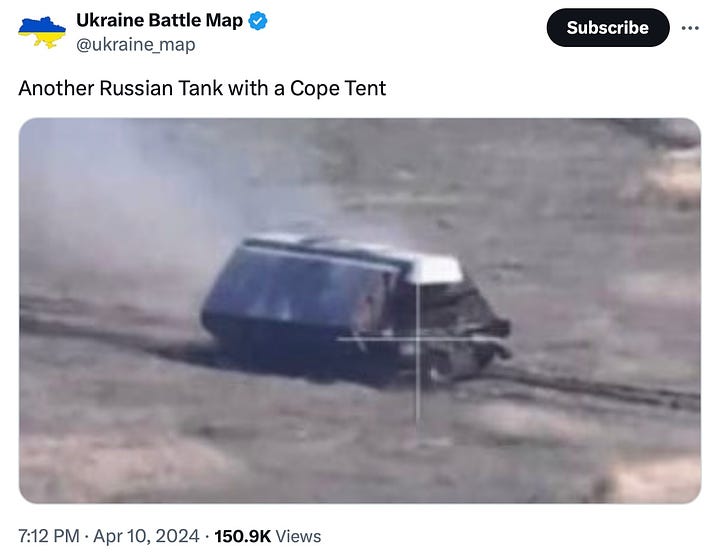
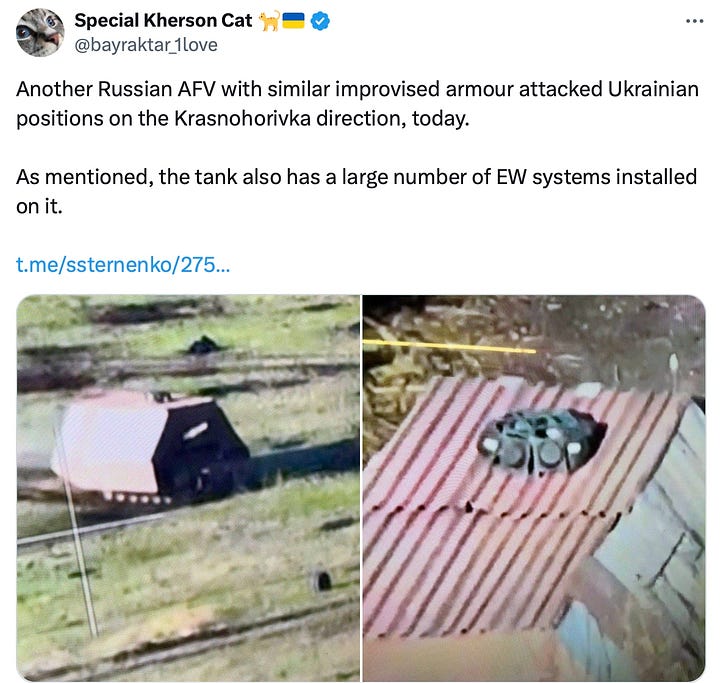
Since that time, these odd vehicles have been employed on multiple occasions in eastern Ukraine. The vehicles appear to be on an evolutionary pathway as well. While the initial versions appeared to have just the metal shell to protect them from FPV drones, a second generation then added EW protection. The next generation has featured additional anti-drone cages over the metal shell as well as mine rollers at the front of the vehicle.
As such, we might view on the ongoing development of these vehicles as follows:
Generation 0: A-vehicle cope cages and camouflage from Feb 2022-April 2024.
Generation 1: A-vehicle with metal tortise shell.
Generation 2: A-vehicle with metal tortise shell and EW suite.
Generation 3: A-vehicle with metal tortise shell, EW suite, additional cages and mine roller.
This article from The Armourers Bench provides a good summary of turtle tank sightings over the past few months.
The Solution to an Operational Problem
Clearly the Russians have put some thought into this new capability for their ground forces in Ukraine. It is the result of several new technologies in this war which have made defence the stronger form of war in the past two years or so. As I wrote in a recent piece on this topic:
After two years of war, and some early successes in offensive operations, adaptations on both sides have led to an increasingly difficult environment for the conduct of offensive operations. As the Ukrainian counteroffensive last year, and the lack of significant progress in Russia’s 2024 offensives against a much weaker Ukrainian force demonstrate, the defence is now the stronger form of war – at least in Ukraine.
This is the convergence of three key technological systems:
The autonomy - counter autonomy system, which includes autonomous and semi-autonomous systems in the air, ground and maritime environments and the developing counter autonomy systems.
The meshing of civil and military sensors and analysis capacity that is transforming the level of situational awareness available to all levels of military command and streamlining kill webs (or perhaps better described as kill-meshes).
The democratizing of battlefield digital command and control (C2) systems, which is seeing digital C2 becoming available to nearly all combatants and support personnel.
This convergence has meant that offensive operations in the land domain have become increasingly difficult. The key operational challenge that these turtle tanks seek to address is the capacity for ground combat forces to mass, rapidly cross the line of departure for an assault, survivably cross from there to the forward line of enemy defences, and support the break in battle for ground combat forces (supported by UAVs and other systems).
In a February 2024 article for the Modern War Institute, I described this challenge as follows:
Modern combat forces require new-era techniques that are quicker, lower signature, and more survivable at crossing the operational and tactical spaces between them and their objectives. The failings of current Western military doctrine were exemplified by Ukraine’s struggle in 2023 to penetrate Russian minefields and defensive belts in southern Ukraine. These were a combination of traditional (read old) obstacle zones, minefields, trenches, and pillboxes with meshed civil-military sensors, assessments, and fires. The technologies and techniques of combined arms breaches have barely changed in half a century but the defensive zone to be penetrated has changed drastically due to new technologies.
It is not the first time that modern soldiers have faced such a dilemma. The stalemate on the western front during the First World War featured a similar shift to defence as the strongest form of war due to the impact of massed manufacturing, machine guns, better artillery, better observation devices, aircraft, and improved communications between observers and artillery.
Both the allies and the Germans trialled different offensive methods in the first three years of the war. While they displayed an uneven approach to learning, generally both sides came to appreciate the need for new tactics and different forms of ground manoeuvre to break the deadlock on the western front.
The Canadian victory in the Battle of Vimy Ridge featured the integration of tanks with infantry, artillery, engineers and the use of subterranean mining and the employment of aircraft. It heralded a method for successful offensive operations which would be improved upon for the 1918 offensives between July and November of that year by the allies on the western front.
Does the new Russian turtle tank portend the first slight glimmering of new methods of offensive operations for modern war on the land?
An Evolution in Tank Design?
Before I address new methods of war on the land, I want to quickly examine the future of the tank in the context of the Russian turtle tanks. The subject of the future of tanks and other armoured vehicles has been the subject of much commentary since the beginning of the large-scale Russian invasion of Ukraine in February 2022.
I think it is fair to say that the new Russian innovation is probably not a new evolutionary pathway for tanks. It is more of a testbed for technology, tactics and techniques for offensive operations. While I don’t expect we will see China or western nations turn to large scale production of such a vehicle, it does offer insights into the future of armoured vehicle design.
In particular, it is testing the following capabilities:
Survivability against drones, loitering munitions and FPV drones in the tactical environment.
The conduct of electronic breaching operations as part of ground assault.
The integration of drone and EW defences into combined arms operations.
The integration of physical and electronic breaching in a single platform.
Protected movement of infantry.
As such, each of these capabilities are being trialled and might feature subsequently in more minaturised form on future armoured vehicles, on uncrewed ground vehicles or in a combination of both.
At the same time, the Ukrainians will be figuring out ways to quickly immobilise and destroy these vehicles. There is some evidence that the turtle tanks can sustain dozens of strikes from FPV, which makes them a deadly addition to Russia’s ground combat forces.
That said, the turtle tank is probably just an intermediate capability to solve the problem of survivably closing with the enemy and enabling the break-in battle in an attack by combat forces.
A Temporary Battlefield Capability
While a useful demonstration of different capabilities to support offensive operations, the turtle tank itself is probably an evolutionary dead end. The vehicles are large, slow-moving and unwieldy, with limited crew visibility (unless there are numerous external cameras we arent aware of). While its appearance has probably assisted Russian operations while Ukraine has lacked large quantities of western munitions over few months, this opportunity will end soon for the Russians.
If this is the case, what might follow on adaptations by the Russians look like?
First, the electronic breaching for offensive operations might be undertaken by EW equipped UGVs and crewed armoured vehicles in future. In particular, the accelerating development and deployment of UGVs by both sides in Ukraine indicates that this may be one of many missions that these uncrewed vehicles will undertake.
Second, the physical breaching of minefields and other obstacles might also be a mission for new types of UGVs. This might include kamikaze UGVs and UGVs that lay out explosive line charges. There are already prototypes of such vehicles being developed.
Third, the continued development of crewed armoured vehicles with passive and active defensive measures against drones, including better camouflage, electronic countermeasures and directed energy defensive systems.
As such, the array of tasks that are currently undertaken by the turtle tanks are likely to be distributed to many smaller, lower signature uncrewed vehicles as both sides experiment with new tactics and technologies for offensive operations. Both the Russians and Ukrainians appreciate that successfully returning to offensive operations is key to their respective theories of victory.
The Adaptation Battle Continues
The turtle tank is a weird-looking beast. But it is an adaptation for a particular battlefield problem for a particular environment in one theatre of war. It will probably be neutralised by Ukrainian adaptation in the near term, and is unlikely to be suitable for other operational theatres.
It is also a demonstration of the adaptive capacity of the Russian Army. While they have been generally slower at learning than the Ukrainian military, they have managed to learn and adapt throughout the war.
The turtle tank demonstrates, again, that once they have eventually learned a lesson from their battlefield experience, the Russians are able to turn their industrial capacity to a solution. They remain a dangerous and unpredictable adversary.




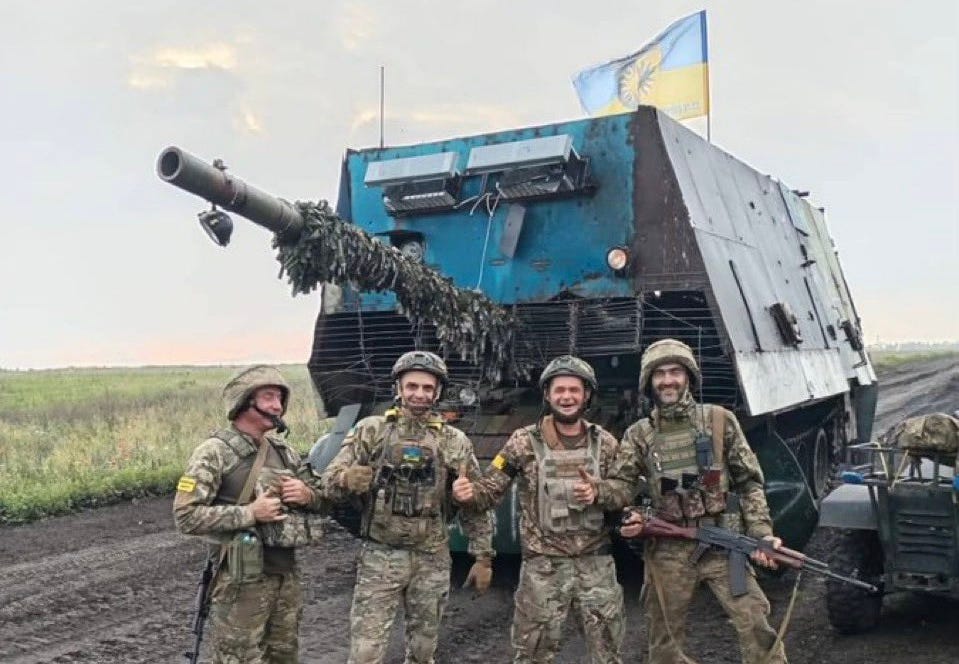
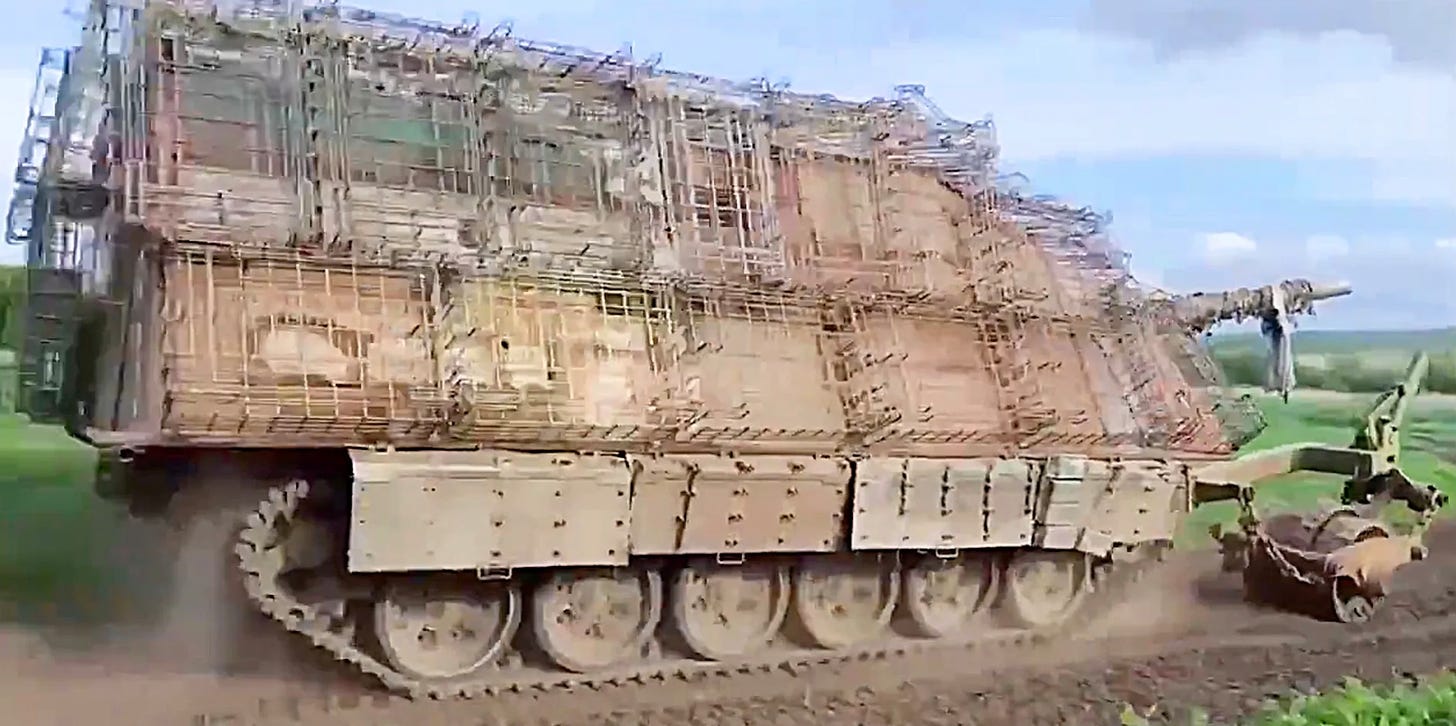
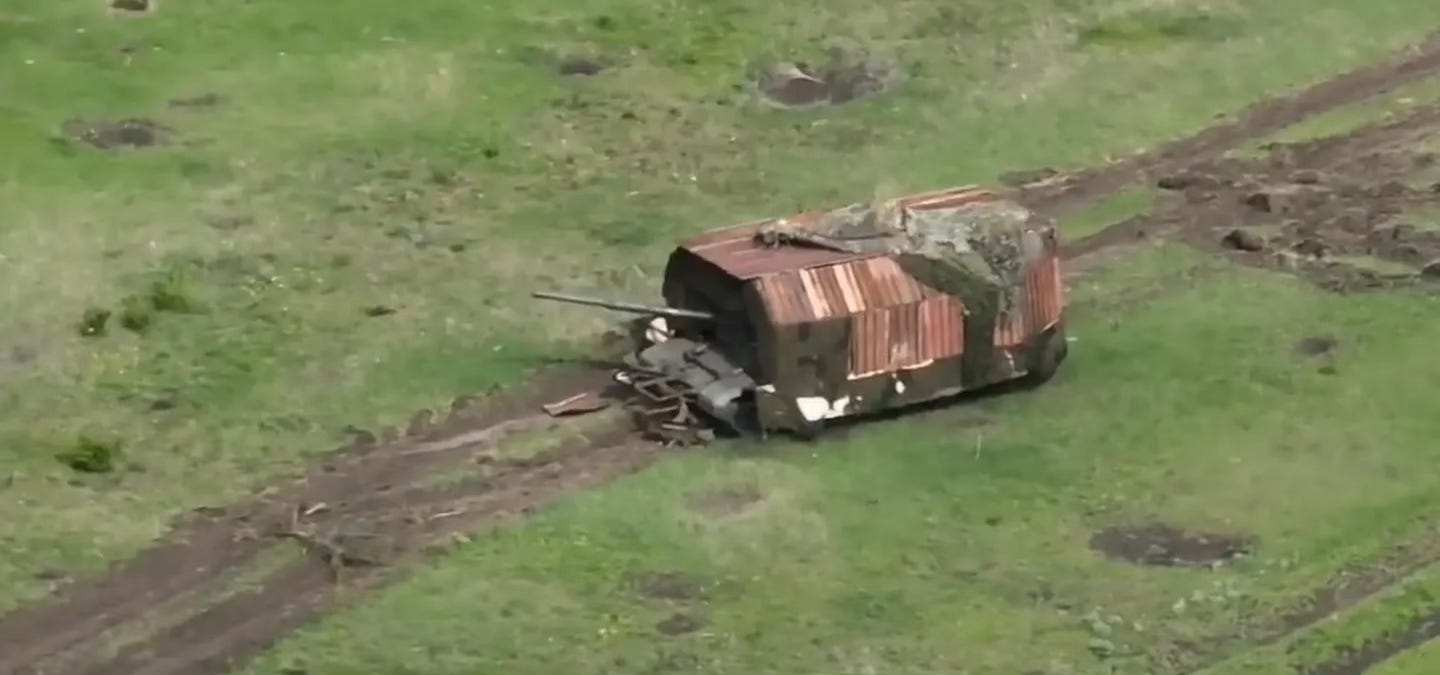
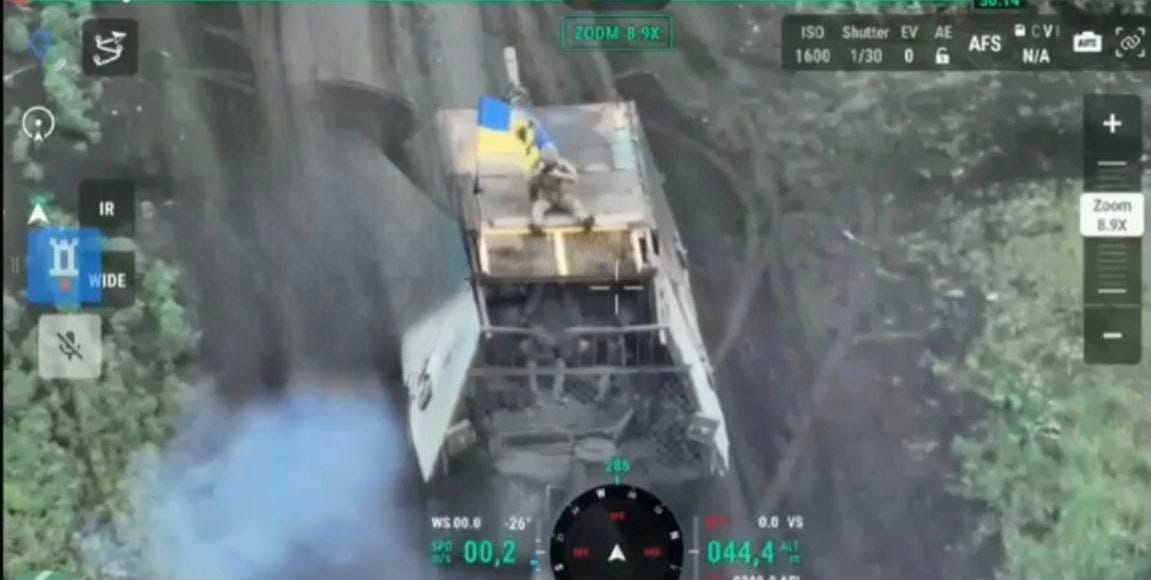
I think that a key thing to watch here is the evolution of the radios in FPV drones. There are already reports of the Ukrainians deploying "$40K FPVs" that use higher-frequency, directional, and therefore jam-resistant communications. If the Ukrainians are able to deploy those in significant numbers then the ad-hoc barrage jammers that are carried by these turtle tanks will lose relevance
The one that got captured ran over a mine, so perhaps the answer is to rig up a drone which is a flying mine and go for under the tank or tracks...